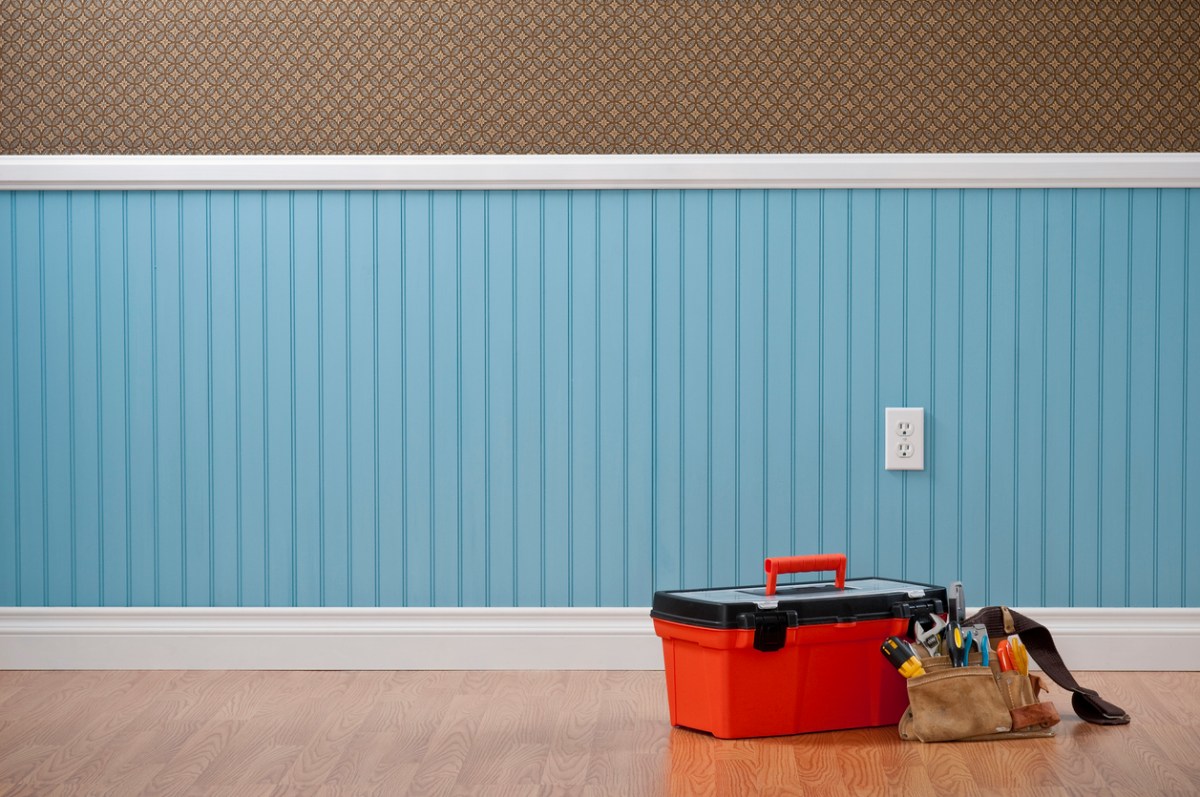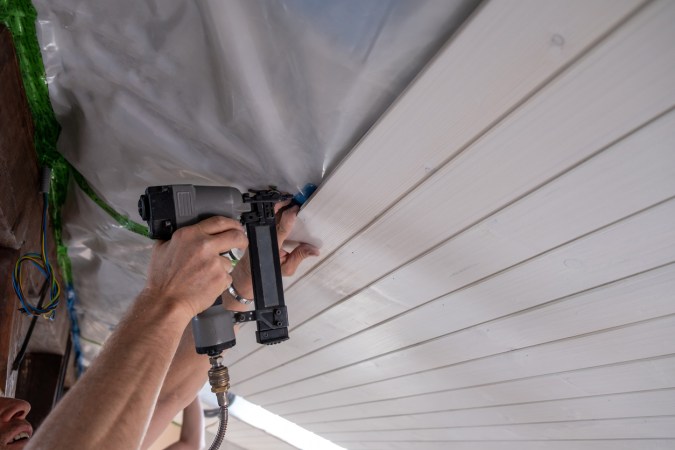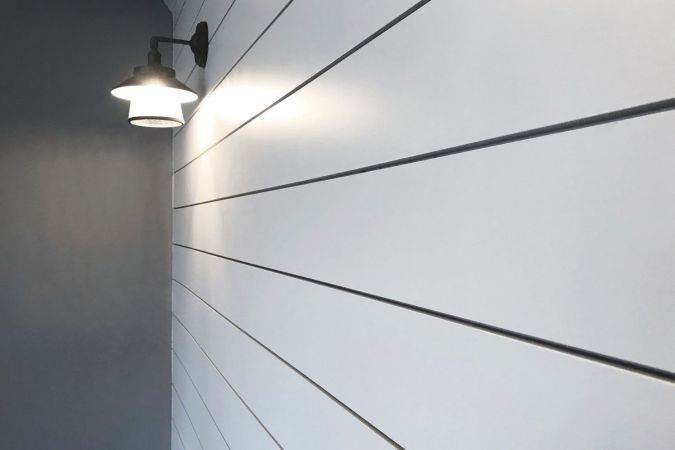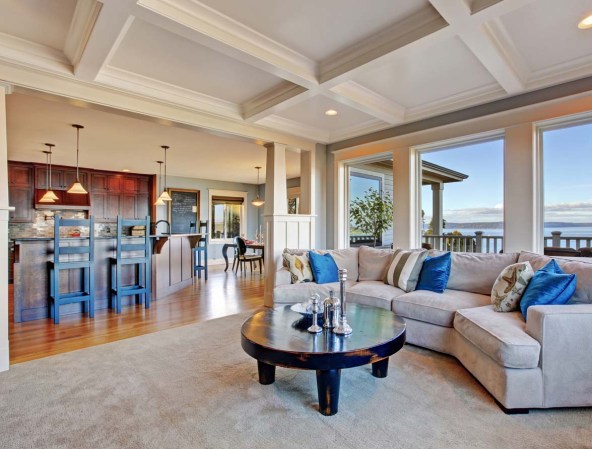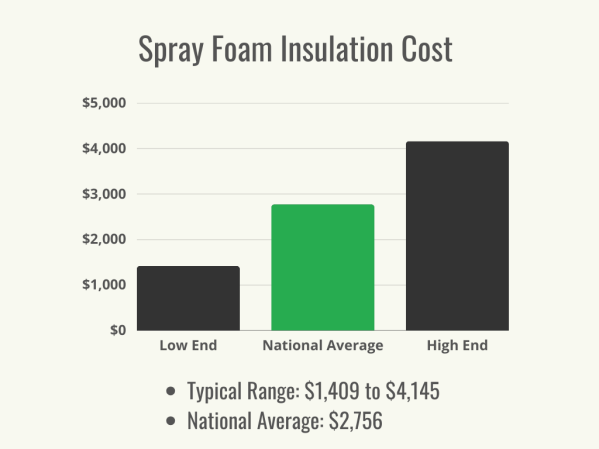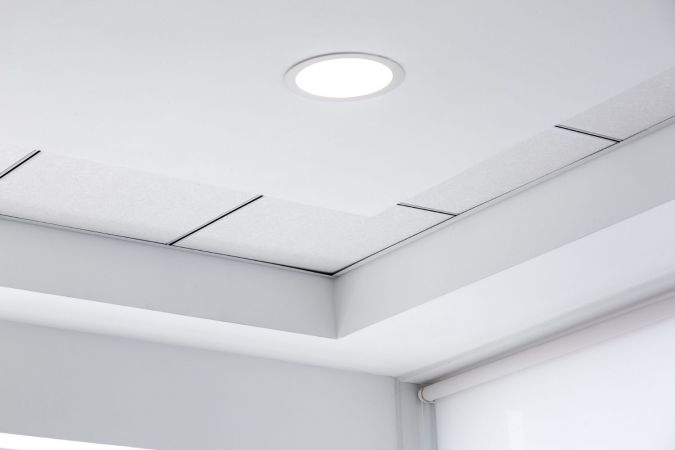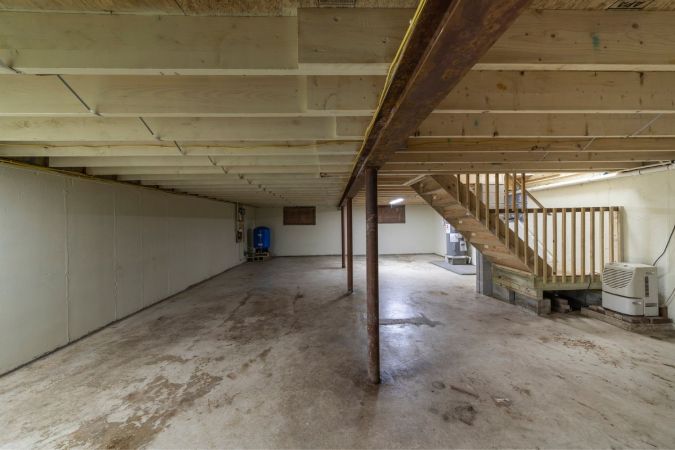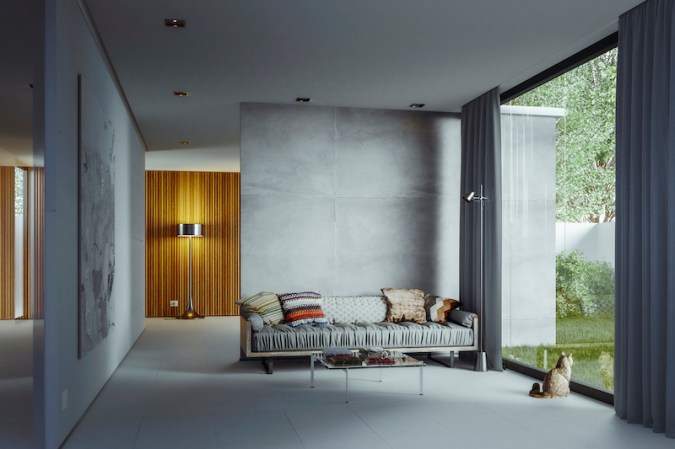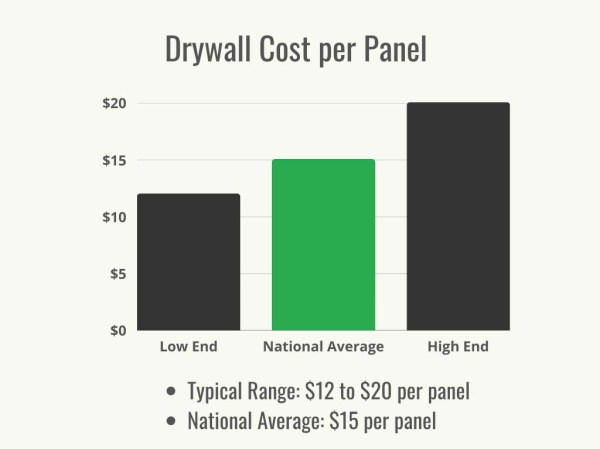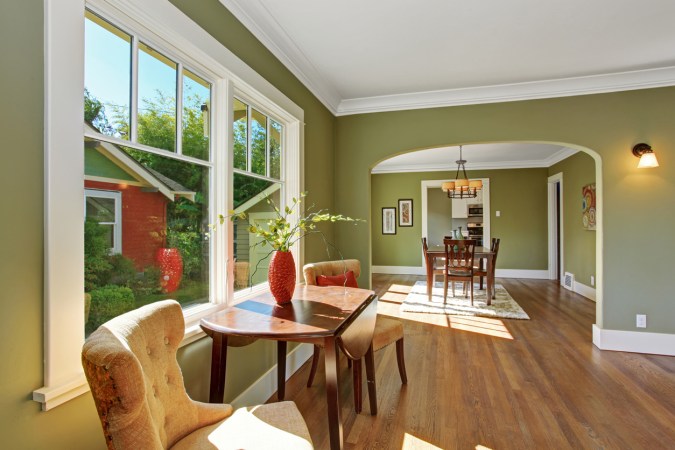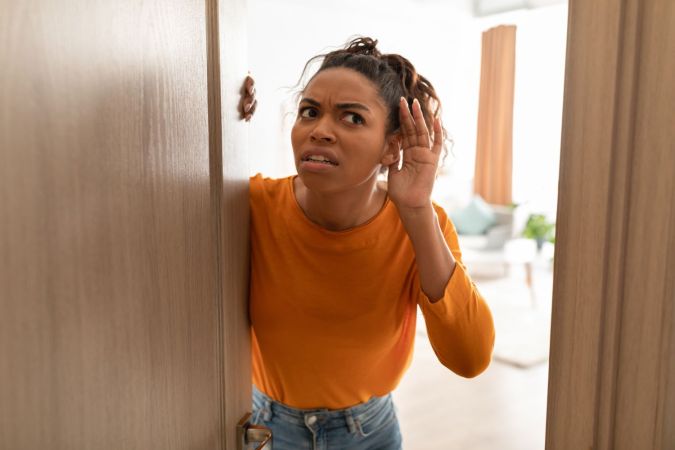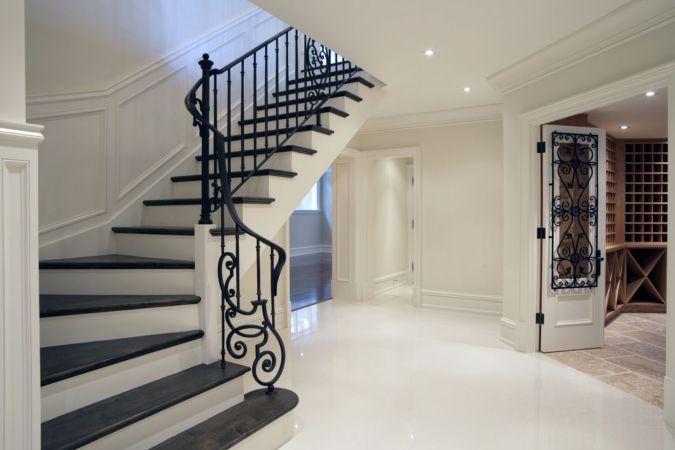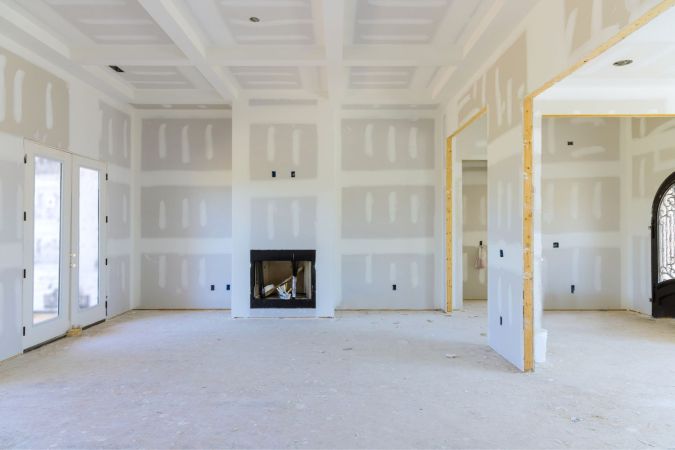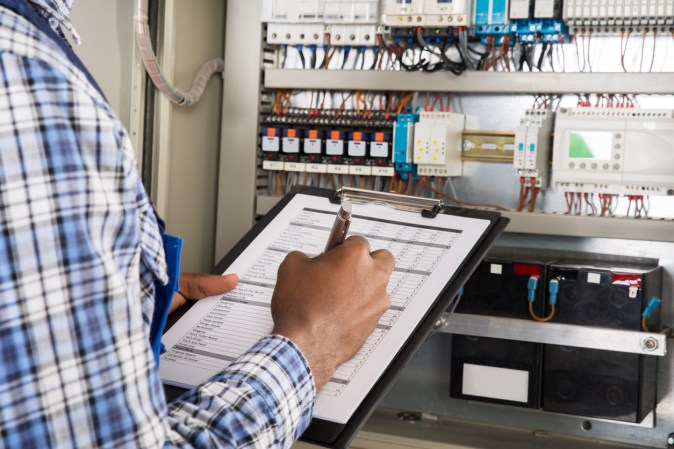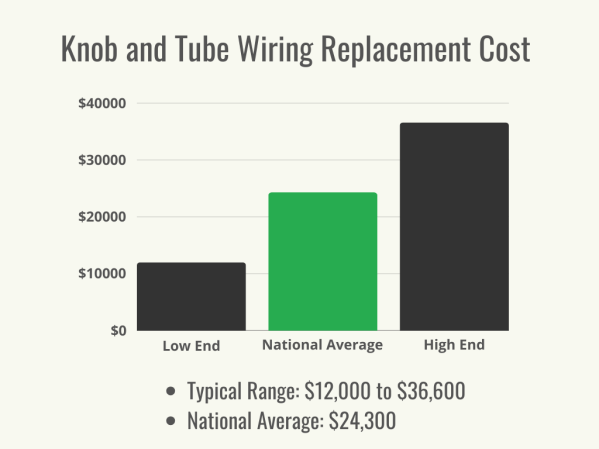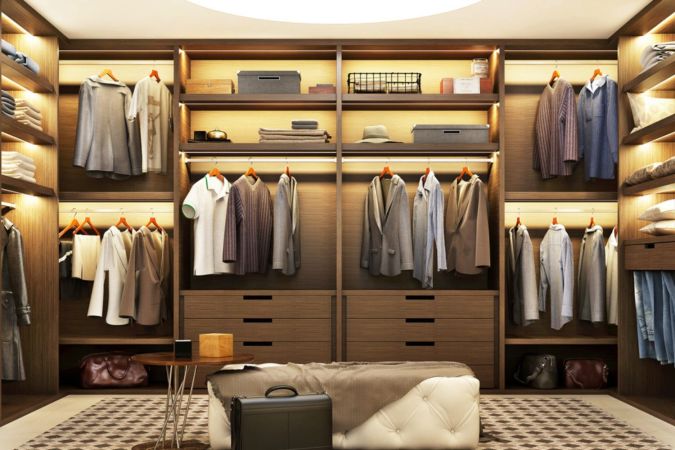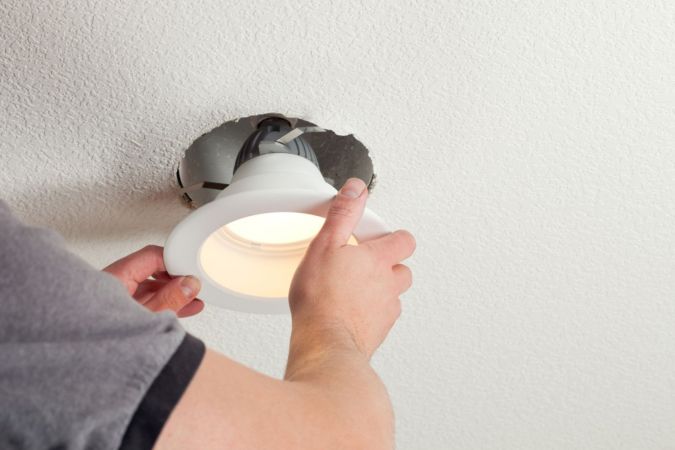We may earn revenue from the products available on this page and participate in affiliate programs. Learn More ›
Highlights
- The average wainscoting cost ranges between $1,050 and $1,600 for a 12-foot by 12-foot room, though most homeowners spend about $1,325.
- The type and number of panels, room size, labor costs, finishing work, and other factors will determine the final price of a wainscoting project.
- Homeowners who decide to install wainscoting enjoy better wall protection and improved aesthetics that indirectly improve the home’s value.
- Installing wainscoting is easier than some home improvement projects, but many homeowners still choose to let a professional carpenter handle the job to ensure it’s installed with precision and quality.
Wainscoting is a centuries-old wall paneling that began as a functional way to insulate walls and has transformed into a decorative design element that can be installed in nearly any room. “Wainscoting can enhance the aesthetics of a room by adding architectural interest,” explains Danielle Nash, a San Francisco–based project director and interior designer with Freemodel. “If you have a room that you’re looking to upgrade, but don’t want to do a full renovation or remodel, wainscoting can assist in creating visual balance as well as a sense of elegance.”
It typically costs between $1,050 and $1,600 or an average of $1,325 to install wainscoting in a 12-foot by 12-foot room, according to HomeAdvisor. While wainscoting cost is mainly dependent on the size of the room, other factors influence the price as well. The type of material, amount of detailing, finishing options, and the labor to install the panels are key factors that impact the final cost of the project. Simple wainscoting in small rooms can be a cost-effective upgrade, while more detailed wainscoting in a larger room will require a more substantial budget.
What is wainscoting?
Wainscoting refers to wood panels that are installed on the lower third of a wall. An early intention for wainscoting was to protect plaster walls from damage by chairs or other objects. It also acted as an additional layer of installation to keep the rooms warmer. Wainscoting can take many forms and support many different design styles. Traditionally, the height of wainscoting stops at the top of the average chair or about the lower third of the wall. It can also reach as high as shoulder or ceiling height for a bolder look.
Wainscoting panels offer several design styles: simple with minimal trim, elegant with recessed panels, or traditional with capped beadboard panels. Historically, wainscoting existed in dining rooms, but today, it’s often installed in high-use areas such as bathrooms and hallways or used as a design element in any room. To see a variety of options, homeowners can search online or speak with an interior designer about popular wainscoting ideas for their home.
Factors in Calculating Wainscoting Cost
Wood is the most common material choice, but wainscoting can also be made from plywood, medium-density fiberboard (MDF), vinyl, plastic, and even stone veneer. The material selected will affect the total cost along with the total square footage, the number of panels, and the cost of labor to install it. Wainscoting is sold by the square foot but often comes in prefabricated panels with predetermined dimensions.
Square Footage
It typically costs between $1 and $40 per square foot to add wainscoting. The wide price range depends on the material chosen and how detailed the design is. Most homeowners spend an average of $23.50 per square foot. The square footage needed will depend on the room in which the wainscoting is being installed. For instance, it could cost up to $1,600 to install wainscoting in a 40-square-foot bathroom, but a 200-square-foot dining room could cost between $200 and $8,000.
Number of Panels
Another way to calculate the cost is to estimate the cost of each panel rather than going strictly by square footage. Standard wainscoting panels are about 32 inches high for rooms that have an 8-foot ceiling, but the dimensions can vary widely depending on the type of panel and the ceiling height. The variations make this a less common method to calculate costs.
Purchasing panels in any predetermined dimensions can cut down on labor costs as there will be less on-site cutting required. Custom wainscoting panels installed at the desired height and length can cost more than prefabricated panels, but they also offer a refined look.
Panel Material and Type
Wainscoting offers a range of styles and materials to choose from as homeowners look at wall paneling ideas that can even include beadboard or shiplap. The design can feature a flat panel, raised panel, or overlay. Board and batten can also be used to create wainscoting for a more rustic style. The type of panel and the material it’s made from will affect the final cost.
| Type of Material | Average Cost per Square Foot (Materials and Labor) |
| Ceramic tile | $12 to $28 |
| Flat, stained hardwood | $19.50 to $21 |
| Medium-density fiberboard (MDF) | $1 to $5 |
| Plastic | $6 to $10 |
| Plywood | $1 to $5 |
| Raised, stained hardwood | $30 to $40 |
| Stone veneer | $12 to $28 |
| Vinyl | $6 to $10 |
Wood wainscoting can be manufactured from a wide range of wood options, including cedar, redwood, cherry, oak, and even bamboo or reclaimed wood. Each type of wood has its own color and visual texture that will appeal to different homeowners. Some woods are also better suited for certain rooms than others. For instance, cedar is naturally rot-resistant, which means it may work best in high-moisture areas like bathrooms.
Labor
A contractor will typically charge between $4 and $6 per square foot for materials and installation. For contractors who charge an hourly rate, homeowners can expect to pay between $80 and $100 per hour. If the wainscoting panels are prefabricated or have simple designs, it will cost less to install them than if a contractor is putting up custom panels with intricate trim work. Learning how to install wainscoting takes time, patience, and practice, which is why it’s worth paying a carpenter to do the job if the homeowner wants a high-quality result.
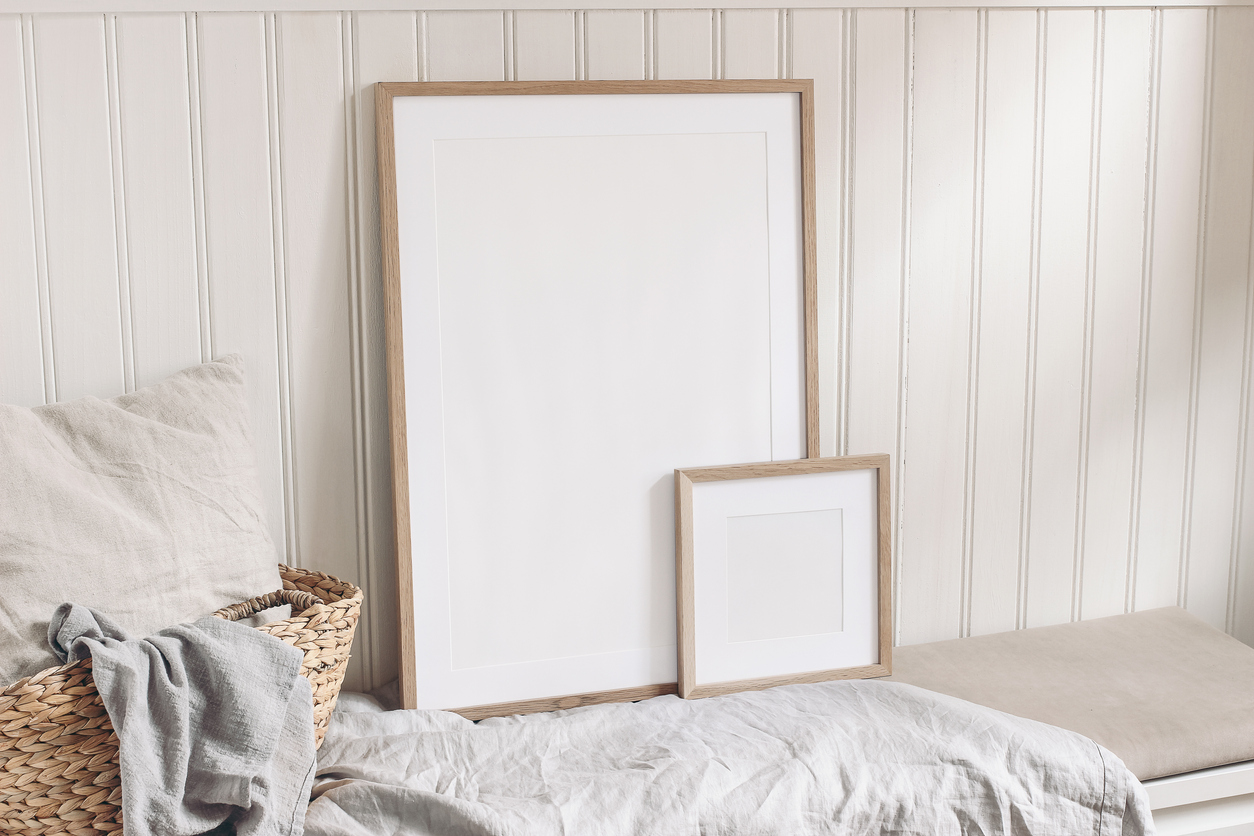
Additional Costs and Considerations
In addition to the material costs of wainscoting and the labor to install it, other potential cost factors include the choice of prefabricated or custom wainscoting, the cost to paint or stain it, and the installation of a ceiling panel. A wainscoting installation can be done on a relatively small budget, but these additional costs and considerations can potentially raise the price of the total project.
Prefabricated vs. Custom Wainscoting
Prefabricated wainscoting is available at most hardware stores. Beadboard is one of the more popular types of prefabricated wainscoting that costs less to install than a custom wainscoting job. Savvy homeowners on a tight budget may be able to learn how to install beadboard to save on costs. If there aren’t any prefabricated wainscoting options that fit with the room’s design or the homeowner wants something truly unique, custom wainscoting is an option. The cost to install prefabricated wainscoting falls between $7 and $40 per square foot, while the cost of custom wainscoting falls between $18 and $46 per linear foot.
Painting
Most homeowners will paint wainscoting to match or contrast with the room’s color scheme. White wainscoting can give the home an elegant, farmhouse, or cottage feel depending on the trim and detailing. Conversely, the painted wainscoting can be a bold color to enhance its status as a design element. It even works well against wallpaper to highlight a certain color.
The cost to paint wainscoting depends on how many gallons of paint are required. A gallon of paint costs $25 to $50, or between $0.80 to $1.80 per square foot. Hiring a painter or handyman to paint wainscoting will typically cost between $20 and $50 per hour. The best house painters (like CertaPro Painters and 360 Painting) will have the tools and expertise to get the job done quickly without sacrificing quality. Combining paint projects can reduce trips by painters and may save homeowners on the cost to paint a room.
Ceiling Panel Installation
While beadboard is most often installed as wainscoting on walls, it can also be installed on the ceiling for added dimension. A wainscoting ceiling can be installed at a cost of $5 to $6 per square foot and have a similar appearance to a shiplap ceiling. Most beadboard is made from wood, but vinyl is an option that works well on porches or outdoor ceilings since vinyl is more weather-resistant.
Wainscoting Cost by Type of Panel
Different types of wainscoting allow homeowners to create the ideal look they’re going for. Some panels can look rustic and cozy, while others look sophisticated and formal; each has its own cost range. The look of the panels can also be customized by the type of molding that’s installed.
| Type of Panel | Average Cost per Square Foot (Materials and Labor) |
| Beadboard | $7 to $20 |
| Board and batten | $7 to $20 |
| Flat panel | $7 to $10 |
| Overlay | $10 to $40 |
| Raised panel | $10 to $30 |
| Shiplap | $2.50 to $7 |
Beadboard
It’s easy to spot beadboard panels: They feature thin vertical strips of wood separated by a vertical “bead” or groove. These decorative panels work in both casual and formal designs. When paired with a simple baseboard and top cap, beadboard fits well in cottages and rustic designs. A more intricate baseboard and cap can blend the wainscoting well in Victorian-style spaces. The beadboard itself typically costs between $0.50 and $1 per square foot with an average cost of $7 to $20 with professional installation.
Board and Batten
Board and batten wainscoting is a popular choice for homeowners looking at rustic wainscoting ideas. To create board and batten wainscoting, wide boards are installed vertically with thinner boards installed over the seams to conceal them. This type of wainscoting costs between $7 and $20 per square foot and is best used in more casual designs.
Flat Panel
One of the most minimalist types of wainscoting is flat-panel, since they are—as the name suggests—flat. They also don’t come with extravagant trim or beveled edges since the idea is to keep it simple. Flat panels cost between $7 and $10 per square foot to install. This type of wainscoting works well in contemporary or simple spaces that need only a light but impactful design touch.
Overlay
Overlay wainscoting is the most decorative type of wainscoting, which also makes it one of the more expensive types at between $10 and $40 per square foot. This style features a raised-panel design with extra detailing. It can fit well with any aesthetic style but works especially well in more formal and sophisticated rooms.
Raised Panel
Nash says that “Raised panel wainscoting is suitable for traditional and formal interior design styles as it offers a classic and elegant look, which is achieved by panels with a raised center.” The raised center panel usually has beveled edges and may be one of the more recognizable types of wainscoting. Raised-panel wainscoting costs between $10 and $30 per square foot.
Shiplap
While shiplap may not technically be wainscoting, it can act as wainscoting if installed on the traditional lower third of the wall. Shiplap boards are installed horizontally with specially made boards that have a groove in the middle for a distinct look. Most shiplap costs between $2.50 and $7 per square foot, which makes it a cost-effective material that works well for homeowners on a budget.
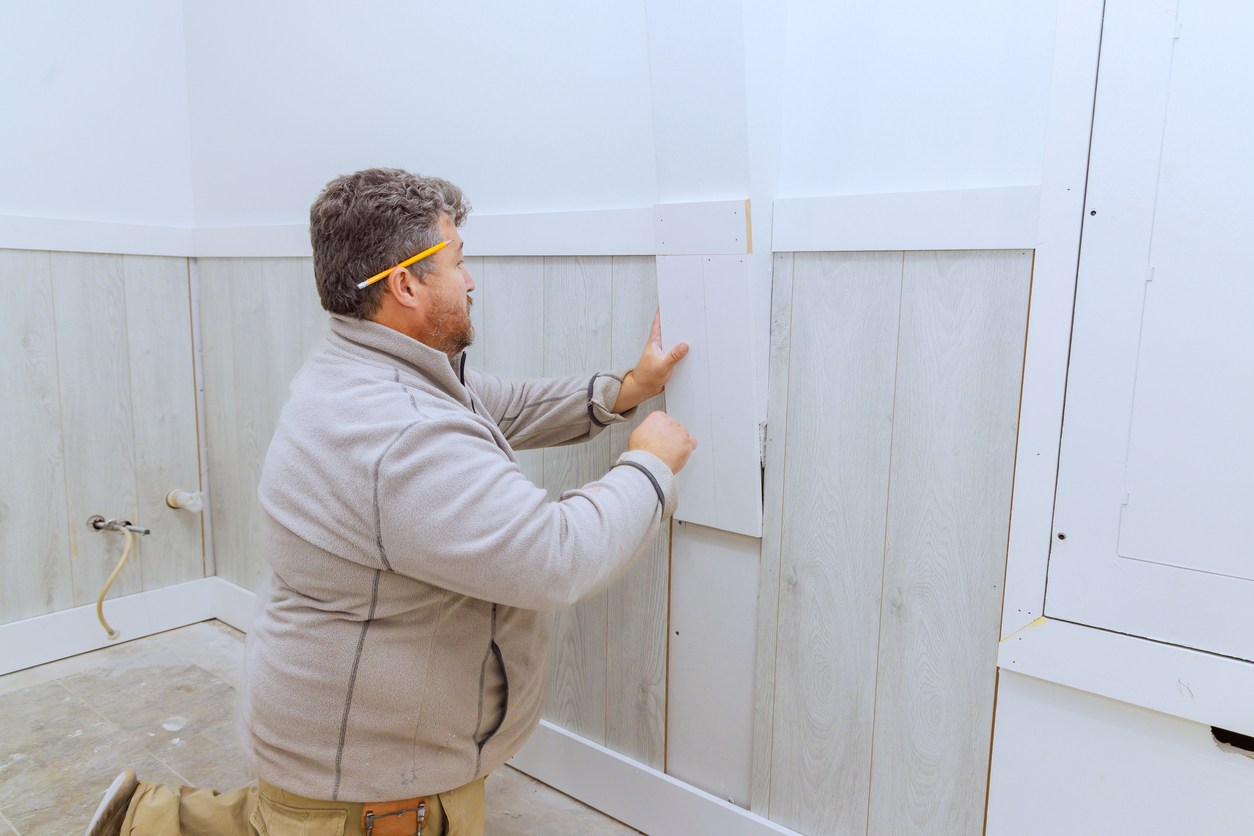
Benefits of Installing Wainscoting
Besides the practical benefits of wall protection and added insulation, wainscoting adds character to a room’s design. It is also incredibly versatile with different types of materials, panels, and colors to choose from. Planning a room with wainscoting allows for more design flexibility as well as improved aesthetics. Wainscoting can also influence the feel of the room, making it casual, sophisticated, minimalist, or formal.
Wall Protection
Wainscoting offers wall protection in high-use areas. For instance, plastic-based wainscoting bathroom walls can protect the drywall from the humidity that builds up in a bathroom. To maintain wainscoting, homeowners can simply wipe it with a wet cloth or add a little soap for more stubborn messes. Wainscoting in dining rooms can protect the walls from chairs that could otherwise dent the drywall or scuff the paint. It’s also helpful at protecting against accidental or intentional damage caused by pets or children.
Easy Installation and Removal
Installing wainscoting is relatively easy, and removing it is easy as well. Careful measuring needs to happen first, but the most important tools for installation are a circular saw and nail gun. Adhesive can be used before the nails to add stability, but that will make it more difficult to remove. Otherwise, the wainscoting simply needs to be pried away from the wall for removal.
Improved Aesthetics
Adding wainscoting to a room improves the aesthetics by adding dimension and character on an otherwise bland wall. It can make a room’s design feel complete with either a complementary or contrasting color. The panels can be flat, raised, or overlay to highlight the design style, whether casual, sophisticated, or fun.
Wainscoting can also be painted the same color as the rest of the wall, which adds dimension without adding color. This is a good way to improve aesthetics in simple, minimalist designs that make a statement without becoming too busy. The panels can even frame artwork or create pleasing symmetry on walls. The improved aesthetics can correlate to a higher home value too.
According to Nash, “Wainscoting can increase the value of a home in a couple of ways. First, it serves as a protective barrier for walls, which can assist in preserving the walls, thus decreasing the normal wear and tear that occurs to walls over time. Secondly, wainscoting adds texture and depth to the overall design.”
Versatility
In addition to dining rooms and living rooms, wainscoting can also be installed in bedrooms and bathrooms or on stairs and ceilings. Even after its initial installation, wainscoting continues to be versatile since it can be painted or stained different colors to match the changing tastes of the homeowners. So, what may begin as a vibrant addition in a bright color can turn brooding and moody with the application of a darker paint.
“It’s important to select a wainscoting style that is going to complement the overall theme of the room,” advises Nash. “The color contrast between the wainscoting and the surrounding walls not only highlights the architectural features, but it also helps draw attention to the intricate details wainscoting can provide.”
Wainscoting Installation: DIY vs. Hiring a Professional
Compared with many other home renovation projects, DIY wainscoting is one of the simpler projects a savvy homeowner could tackle. Wainscoting materials can be purchased as prefabricated panels that require minimal cutting if properly measured. The DIYer would need a circular saw and nail gun for the most efficient and precise installation. However, not every homeowner has those tools, nor the time and patience to install decorative elements.
Hiring a professional to install wainscoting may cost more than a DIY project, but it can potentially lessen the time it takes to complete the project. Carpenters can skillfully measure and cut the boards to accommodate outlets. And they’ll know how to cut the trim at the proper angles needed to create seamless joints at corners. Precision carpentry is a skill that many homeowners opt to leave to a professional to save themselves time and effort while achieving a beautiful result.
How to Save Money on Wainscoting Cost
Fitting wainscoting into a home improvement budget may be easier than expected since it’s much cheaper than a more costly project such as renovating a bathroom. There are ways to save money on the cost to install wainscoting, which means homeowners may be able to add detail to their design without breaking the bank.
- Opt for cheaper materials. Choosing beadboard or shiplap can cut down on the cost of materials.
- DIY finish work. Homeowners who are handy with a paint brush can do the final painting on their own.
- Choose prefabricated panels. Custom wainscoting is more costly than prefabricated panels.
- Skip the panels. Homeowners could forgo wainscoting panels and simply install trim pieces in a pattern that mimics raised panels.
- Install a chair rail instead. For the most inexpensive option to add some wall protection and design flair, homeowners can paint the lower portion of the wall a different color than the upper portion and install a chair rail where the two colors meet.
Questions to Ask About Wainscoting Installation
Having a construction crew or carpenter work in the home may be a new experience for some homeowners. For that reason, it’s important for homeowners to ask a few questions to make sure everyone is on the same page and expectations are clear on both sides.
- Can you provide a written quote for the project?
- How accurate do your quotes tend to be?
- Do you have a portfolio I can review?
- How long do you estimate the project will take?
- What type of wainscoting is best for my home’s design style?
- What can I do to prepare my home for wainscoting installation?
- Should I paint or stain the panels before you arrive or do you take care of that? If you do, how does that impact the cost of the project?
- Do you offer design services too?
- What would you charge to install a wainscot ceiling?
- Is wainscoting stairs a popular trend?
- Will you attach the wainscoting with nails, adhesives, or one of the best wood glues?
- What can I do to prepare my home?
- Who will my point of contact be?
- Do you guarantee your work?
FAQs
Installing wainscoting can add character to a room, protect the walls, and increase insulation. But even with all of the benefits, it’s likely that homeowners will still have some questions before they commit to this home improvement project. Some key answers to frequently asked questions about wainscoting can help reduce confusion and boost confidence about this project.
Q. Does wainscoting add value to a home?
While wainscoting adds character to a room, it may not directly increase the home value like adding a bathroom or renovating the kitchen does. But the good news is that wainscoting adds aesthetic appeal and shows that the homeowner has thought about the design of the home, which can attract more interest in the home and, potentially, higher offers. There’s also the added benefit that some types of wainscoting can protect the walls against scuffs and dents.
Q. What rooms are best for wainscoting?
While wainscoting can be a beautiful addition to any room, it was traditionally used in dining rooms as a way to protect walls from chair damage. The design appeal and added protection gave wainscoting traction to be installed in other rooms. Today, it’s particularly popular in living rooms, dining rooms, and bathrooms, but it can also be used on ceilings and staircases.
Q. Is wainscoting waterproof?
Wainscoting is most often made from wood, which means that painting and sealing it can make it water-resistant but not totally waterproof. Vinyl wainscoting is more water-resistant, but it may not offer the same look and quality as wood. Bathrooms and patios are the primary areas where homeowners may want waterproof wainscoting; otherwise, it may not be a priority consideration.
Sources: HomeAdvisor, Fixr

